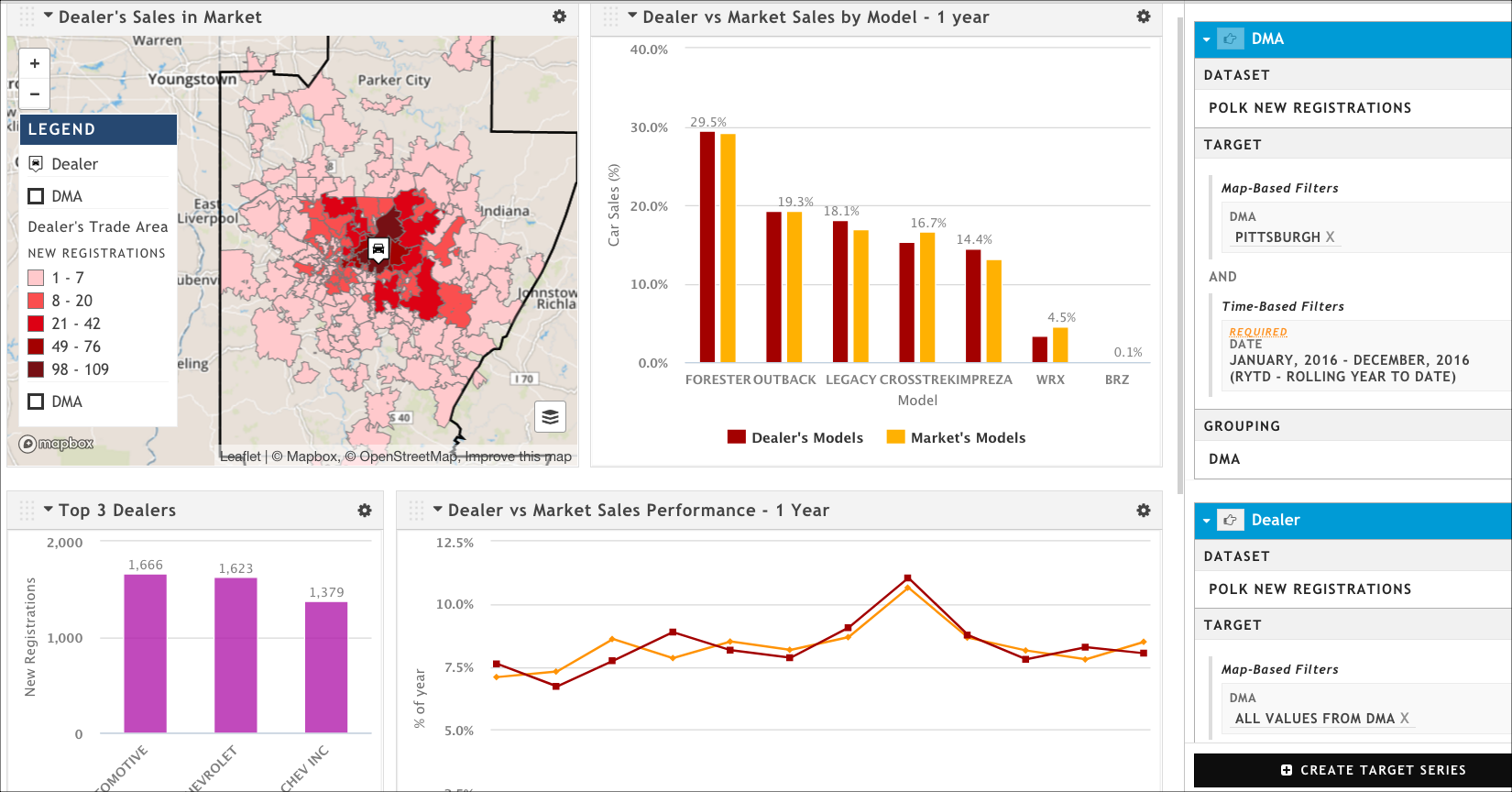A template is a saved set of visualizations, configurations and layout for a dataset. It typically includes one or more target series and the grouping, and at least one of the attribute values is unlocked. When an attribute value is unlocked, that means anyone using the template can quickly specify the value they need for their particular presentation.
You cannot change the dataset used in a template.
Example
Jim is part of a team that sells advertising spots to car dealers across Pittsburgh. The dealers love to see the team's detailed presentations on how they are performing, both against their local competitors and against the Pittsburgh market in general. They also like to see how their car makes are doing overall in the U.S. market and in more regional markets. Finally, they appreciate the demographic information about car buyers; it helps them target their messaging more effectively.
However, Jim finds himself spending hours creating each presentation for each dealer. The time required is limiting the number of dealers Jim's team can approach.
Jim realizes he can make a template that will speed up the process of creating individual presentations; he can share it with the entire team so that everyone can quickly generate a presentation targeted to a specific dealer, and so that there is consistency among all the presentations.
- He begins by creating a new presentation using the Polk New Registrations dataset.
- He adds multiple target series to return the data that will form the basis of the presentation. For example, he might add a target series to look at all of the RTYD sales for a specific dealership, a data series to look at the RYTD sales of the dealer's top 3 competitors, and a data series to look at how the dealer's particular make and models are doing in the overall market.
- He adds all of the visualizations he needs to tell a compelling story to a dealer, then spends some time configuring the visualizations so they look exactly the way he wants them to.
His presentation might look something like the following graphic.

Notice that the names Jim used for his presentation, target series, and visualizations are rather generic; they indicate what the presentation and visualizations are meant to contain as a guide for the rest of his team. The names can be quickly customized when a new presentation is created from the template.
After he is satisfied with the presentation, he creates a Template. When he does so, he leaves a few target series attributes unlocked. Because this template will be used by him and by his team to pitch to multiple dealers, he needs the ability to specify a different dealer, a different make, and different competitors for each presentation. Therefore, he unlocks those attributes.
The next time Jim prepares a presentation for a dealer, he can use the template. All he needs to do is enter that particular dealer's attributes (name, make, top 3 competitors), update some titles for his presentation and visualizations, and generate the PowerPoint version.